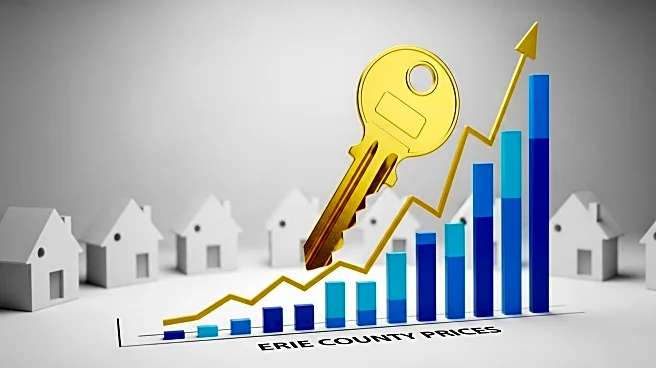What's Happening?
Recent data from Realtor.com indicates that home prices in Chittenden County, Vermont, have increased. In July, the median home sale price was $519,950, marking a 2% rise from June's median of $510,000. Compared to July 2024, the median price increased by 1.6% from $512,000. Single-family homes saw a decrease in median selling price to $580,000, down 2.9% from the previous month. However, the price of condominiums and townhomes slightly decreased to $400,000 from $401,000 in June, but showed an 8.1% increase compared to July 2024. The total number of recorded sales in Chittenden County remained stable at 224, with all residential home sales totaling $125.4 million.
Why It's Important?
The rise in home prices in Chittenden County reflects broader trends in the real estate market, impacting potential buyers and sellers. Higher prices may benefit sellers looking to capitalize on increased property values, but could pose challenges for buyers facing affordability issues. The stability in the number of sales suggests a consistent demand, which could influence future market dynamics. The increase in median prices for condominiums and townhomes indicates a shift in buyer preferences or market conditions, potentially affecting housing strategies and investments in the region.
What's Next?
As the real estate market continues to evolve, stakeholders such as real estate agents, buyers, and sellers will need to adapt to changing conditions. Potential buyers may need to explore financing options or consider different property types to accommodate rising prices. Sellers might leverage the current market conditions to maximize returns. Local policymakers and housing advocates could focus on addressing affordability and ensuring sustainable growth in the housing sector. Monitoring future data releases will be crucial for understanding ongoing trends and making informed decisions.
Beyond the Headlines
The increase in home prices in Chittenden County may have broader implications for the local economy and community development. Higher property values can lead to increased property taxes, affecting local government revenue and public services. Additionally, the affordability of housing remains a critical issue, potentially influencing demographic shifts and economic inequality. Long-term, these trends could impact urban planning and infrastructure development, necessitating strategic approaches to accommodate growth while maintaining community well-being.










